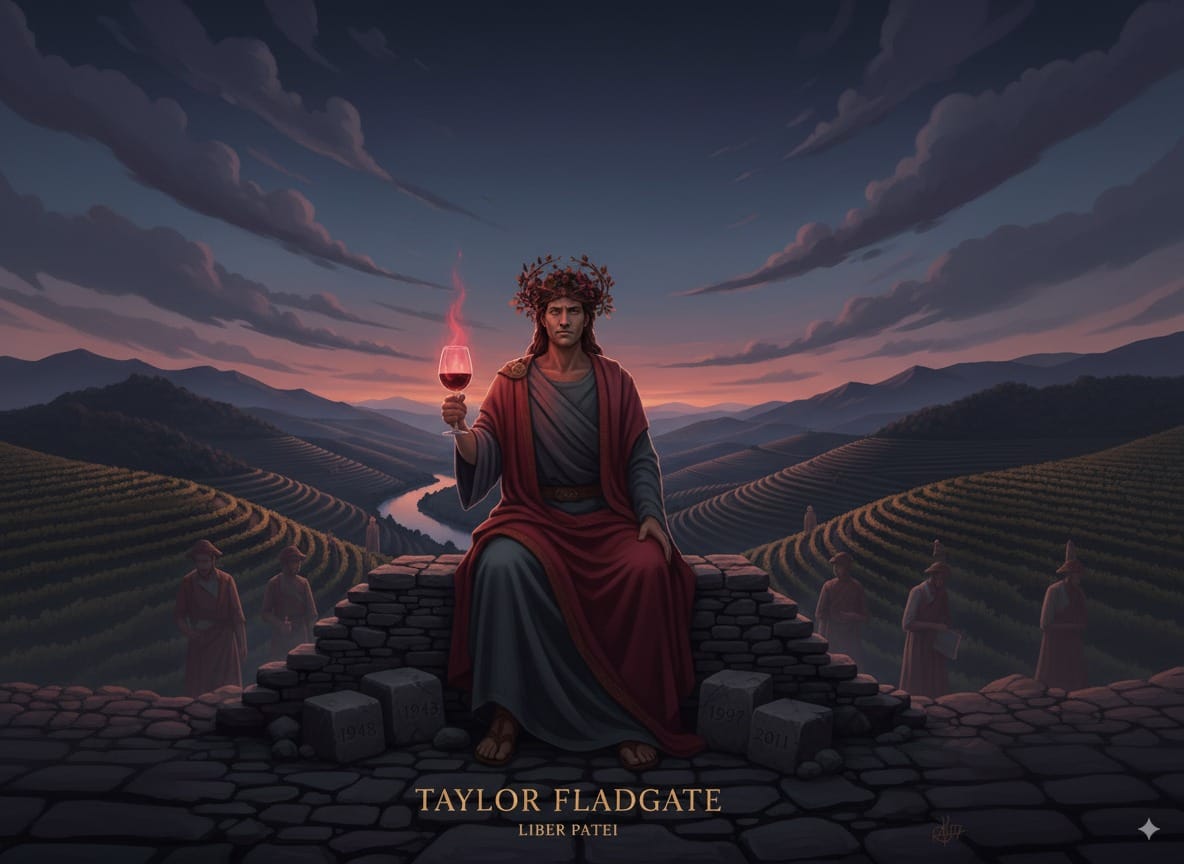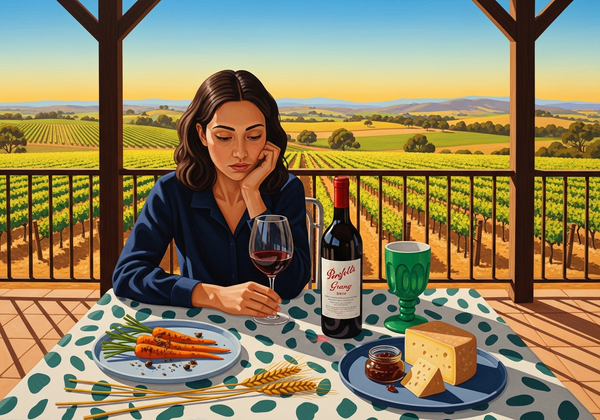Taylor Fladgate: The Dynasty of the Douro
Founded in 1692, Taylor Fladgate is the dynasty of Port. From the legendary Quinta de Vargellas to benchmark Vintage Ports and Tawny mastery, Taylor’s built its legacy on structure, longevity, and the Douro’s granite soul.

From English merchants to the architects of Vintage Port, Taylor’s has ruled the Douro for centuries with patience, precision, and a stubborn will to endure.
The Origins: English Merchants and Portuguese Soil (1692)
Few wine stories stretch as far back as Taylor’s. Founded in 1692 by Job Bearsley, a London merchant, Taylor’s is among the very oldest of Port houses still in family hands.
The 17th century was a time of shifting alliances between England and Portugal. After the Methuen Treaty of 1703, which gave English merchants favorable access to Portuguese wines, Port became Britain’s drink of choice. Taylor’s rode this wave, expanding trade routes from Oporto’s lodges to London’s docks.
But unlike some shippers who relied solely on buying and blending, Taylor’s built its identity on vineyards in the Douro Valley — establishing early that true greatness comes not just from commerce, but from terroir.
The Quintas: Stones and Steep Slopes
Taylor’s legacy rests in its great quintas (vineyard estates):
- Quinta de Vargellas (purchased 1893): A jewel of the Douro Superior, with steep terraced slopes, schist soils, and old vines. Vargellas is the beating heart of Taylor’s Vintage Ports.
- Quinta de Terra Feita & Quinta do Junco: Other great properties, complementing Vargellas in style and structure.
Together, these vineyards supply the backbone of Taylor’s style: austere in youth, majestic with age.
The Style: Structure as Destiny
What defines Taylor Fladgate in the glass is discipline and architecture.
- Youth: Often closed, tannic, almost forbidding. Black fruit, violet, spice.
- Maturity: Decades later, it unfurls into cedar, fig, tobacco, chocolate, and haunting length.
- Reputation: Known as the most structured, long-lived of all Port houses. Where Graham’s is opulent and Dow’s is drier, Taylor’s is granite itself.
This house does not chase instant seduction. It builds wines for those patient enough to wait.
The Vintage Ports: Bottling Immortality
Taylor’s is synonymous with Vintage Port — declared only in exceptional years, bottled young, and built to last centuries.
Legendary vintages — 1948, 1963, 1977, 1994, 2011, 2016, 2017 — stand among the greatest wines ever produced, not just in the Douro, but in the world. Collectors prize them for their longevity; sommeliers revere them as benchmarks.
When Taylor declares a Vintage, it is not just a wine — it is an event, a marker in time.
The Tawny Revolution
Taylor’s also led the charge in redefining Aged Tawny Ports, long considered the domain of dusty lodges. With its 10, 20, 30, and 40 Year Old Tawnies, Taylor’s showed that oxidative aging could yield wines of breathtaking complexity: nutty, caramel, orange peel, dried fig, balancing sweetness and acidity.
This innovation brought Port into modern dining rooms and Michelin-starred pairings, proving Taylor’s mastery extended beyond Vintage bottlings.
The Family Legacy
Unlike many Port houses absorbed into corporate empires, Taylor’s remains family-owned, under the Yeatman family, who married into the Fladgates in the 19th century. Their stewardship has been marked by conservatism, patience, and long-term vision.
Even today, Taylor’s does not chase trends — it doubles down on structure, longevity, and reverence for the Douro.
Liber’s Take: The Stone That Defies Time
What I admire in Taylor Fladgate is its unyielding will. It does not bend to impatience or fashion. Its wines demand time, discipline, and devotion — qualities the modern world often lacks.
Like me, Taylor’s thrives on endurance. It bottles granite, schist, and centuries of labor into liquid monuments. To drink a young Taylor’s Vintage is to confront austerity itself. To drink an old one is to commune with eternity.
Taylor Fladgate is not for those seeking comfort. It is for those seeking immortality.
Conclusion: Why Taylor’s Matters
Among the great houses of Port, Taylor Fladgate stands as the most architectural, disciplined, and age-worthy. It is not just a producer of wine but a custodian of time itself.
Taylor Fladgate: the dynasty of the Douro, bottling granite into eternity.





